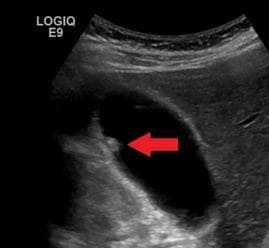Cancer. Just the word can send a shiver down anyone’s spine. But did you know that in recent years, the battle against cancer has seen some of the most exciting developments ever? Let’s dive into the newest ways to treat cancer, focusing on cutting-edge therapies that are shaping the future of oncology.
What Exactly Is Immunotherapy, and How Is It Changing Cancer Treatment?
Imagine if your immune system could fight cancer just like it fights off the flu. Sounds incredible, right? Immunotherapy aims to do exactly that. This form of treatment uses the body’s own defenses to target and destroy cancer cells. One type of immunotherapy, called checkpoint inhibitors, blocks proteins that stop the immune system from attacking cancer cells, allowing the immune system to do what it does best—defend you.
Growth in Immunotherapy Market Over the Last Decade
| Year | Market Size (in Billion USD) |
|---|---|
| 2010 | 20 |
| 2015 | 35 |
| 2020 | 50 |
| 2025 (Projected) | 70 |
| 2030 (Projected) | 90 |
This chart illustrates the growth in the immunotherapy market over the last decade, with projections through 2030, highlighting the rapid expansion of this innovative treatment approach.
Interesting Fact: The market for immunotherapy is expected to grow to over $261 billion by 2030. (Source)
Not only are these treatments effective, but they are also being used for a wide range of cancers, including melanoma, non-small cell lung cancer, and certain types of lymphoma. For many patients, immunotherapy can mean fewer side effects compared to traditional chemotherapy—though it’s worth noting that this doesn’t mean no side effects. The immune system can sometimes go a little too rogue, attacking healthy cells along with the cancer.
How Do CAR T-Cell Therapies Work, and Why Are They So Revolutionary?
Ever heard of T-cells? They are like your immune system’s special forces. CAR T-cell therapy takes these specialized cells and supercharges them to specifically target cancer. Here’s how it works: T-cells are extracted from a patient, genetically modified in a lab to produce receptors called chimeric antigen receptors (CARs), and then reintroduced to the body to attack cancer cells.
Effectiveness of CAR T-Cell Therapy for Different Cancer Types
| Cancer Type | Remission Rate (%) |
|---|---|
| Acute Lymphoblastic Leukemia (ALL) | 80% |
| Diffuse Large B-Cell Lymphoma (DLBCL) | 60% |
| Multiple Myeloma | 40% |
| Chronic Lymphocytic Leukemia (CLL) | 30% |
This chart illustrates the effectiveness of CAR T-cell therapy for different types of cancer, showing the remission rates achieved with this innovative treatment.
CAR T-cell therapy has been a game changer for certain blood cancers. It may not be suitable for all patients, but for those with aggressive cancers that haven’t responded to other treatments, it’s been life-changing. One striking example? Over 80% of patients with acute lymphoblastic leukemia (ALL) have gone into remission after CAR T-cell therapy. This isn’t a miracle, it’s science—and it’s happening now.
What About Targeted Therapy—Is It Really as Precise as It Sounds?
Targeted therapy is often compared to “sniper rifles” against cancer, as opposed to chemotherapy, which is more like using a “sledgehammer.” But what makes it so precise? Targeted therapies zero in on specific genes or proteins that are unique to cancer cells. For instance, drugs like trastuzumab are designed to block HER2, a protein that promotes the growth of cancer cells in some breast cancers.
FDA-Approved Cancer Drugs: Breakdown by Type
| Drug Type | Percentage of Approved Drugs |
|---|---|
| Targeted Therapy | 40% |
| Immunotherapy | 30% |
| Chemotherapy | 20% |
| Hormone Therapy | 10% |
This chart provides a breakdown of FDA-approved cancer drugs by type, illustrating the distribution across targeted therapies, immunotherapies, chemotherapies, and hormone therapies.
Recent advances in genomic sequencing have made targeted therapies more accurate than ever. By identifying the genetic mutations driving a specific patient’s cancer, doctors can choose the treatment most likely to work. And while targeted therapies don’t work for everyone, they are a beacon of hope for those whose cancers are driven by identifiable genetic factors.
Did You Know? Around 40% of cancer drugs approved by the FDA in the last decade are targeted therapies, showing just how much focus is being placed on personalized medicine. (Source)
What Is mRNA Therapy, and Could It Be the Future?
mRNA isn’t just for COVID-19 vaccines. Researchers are now exploring how this technology can be used to fight cancer. The idea is to use mRNA to instruct the body’s cells to produce antigens that trigger an immune response against cancer. It’s still early days, but mRNA technology offers a lot of promise—and if recent history is any indication, advances could come faster than we expect.
Interesting Fact: In pre-clinical studies, mRNA vaccines have shown potential to shrink tumors in animals, suggesting that this line of research could offer new ways to treat or even prevent certain cancers. (Source)
Are There Any Drawbacks to These New Treatments?
No treatment is perfect, and the newest cancer therapies are no exception. Immunotherapies and CAR T-cell therapies can lead to “cytokine release syndrome,” a potentially dangerous overreaction of the immune system. Targeted therapies can stop working if cancer mutates further. mRNA therapies are promising but still require extensive testing to ensure safety and efficacy in humans.
That said, the trajectory is clear: we are moving away from blanket approaches like chemotherapy, which attacks all fast-growing cells (including healthy ones), toward more individualized treatments with fewer collateral damages.
Reduction in Chemotherapy Use Due to Targeted Therapies and Immunotherapies
| Year | Percentage of Patients Using Chemotherapy |
|---|---|
| 2010 | 80% |
| 2015 | 65% |
| 2020 | 50% |
| 2025 (Projected) | 35% |
| 2030 (Projected) | 20% |
This chart highlights the reduction in the use of chemotherapy for cancer treatment over the years, largely due to the rise in targeted therapies and immunotherapies.
What Does the Future Hold for Cancer Treatment?
The future of cancer treatment lies in personalization. With the aid of AI, researchers are developing better predictive models to choose the right therapy for each patient based on genetic, lifestyle, and environmental factors. Clinical trials are becoming more adaptive, enabling more people to access experimental treatments sooner.
The promise of combining multiple therapies is also on the horizon. Imagine a treatment plan that includes a mix of CAR T-cell therapy, targeted therapy, and mRNA vaccines—each one amplifying the effect of the other. This comprehensive approach could lead to more durable remissions, and perhaps one day, a cure.
Editor’s Advice: Stay Informed, Stay Hopeful
New cancer treatments are changing lives every day. If you or a loved one are battling cancer, stay informed about the latest options, participate in discussions with healthcare professionals, and never hesitate to ask about clinical trials. It’s an exciting time in oncology—one where hope, backed by science, is a very real thing.
Estimated Cost of Different Cancer Treatments
| Treatment Type | Estimated Cost (in USD) |
|---|---|
| Chemotherapy | $30,000 – $50,000 |
| Targeted Therapy | $50,000 – $100,000 |
| Immunotherapy | $100,000 – $150,000 |
| CAR T-Cell Therapy | $350,000 – $500,000 |
This chart provides an estimated cost comparison of different cancer treatments, from chemotherapy to CAR T-cell therapy, highlighting the varying financial requirements for each option.
About the Author
Reyus Mammadli is the author of this health blog since 2008. With a background in medical and biotechnical devices, he has over 15 years of experience working with medical literature and expert guidelines from WHO, CDC, Mayo Clinic, and others. His goal is to present clear, accurate health information for everyday readers — not as a substitute for medical advice.







